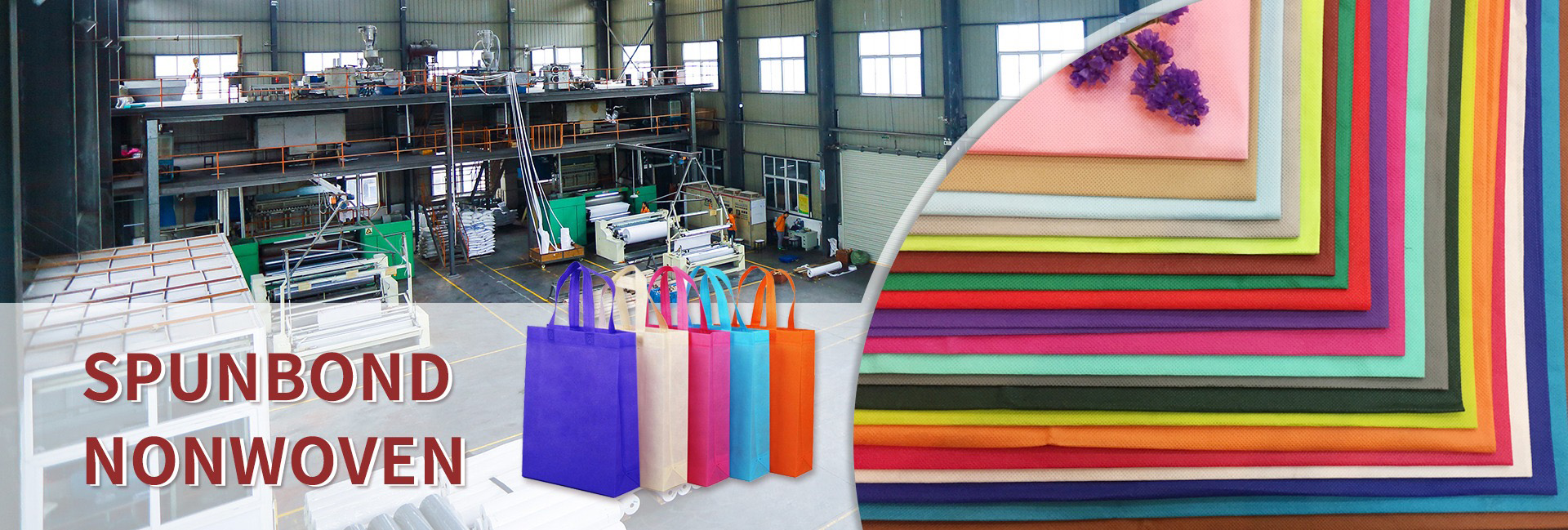The composite technology of non-woven fabric and PE (polyethylene) film has been widely used in modern industry, especially in fields such as medical, health, construction, and agriculture. This composite material combines the softness and breathability of non-woven fabric with the waterproof and chemical resistance of PE film, greatly expanding its application range. This article will introduce several main composite methods of non-woven fabric and PE film.
Film coating composite is the most commonly used composite method by domestic enterprises. Its process is simple and mature, and the production speed is fast, generally reaching about 100m/min. This method uses hot melt adhesive or hot melt resin to directly pour PE film onto non-woven fabric, and after cooling, forms a strong composite layer. However, the disadvantages of laminated composites are poor breathability, hard hand feel, and poor comfort. In addition, for non-woven fabrics with low weight (such as 18gsm or less) or low coating amount, the coating effect is often not ideal and prone to leakage.
Hot rolled composite
Hot rolling composite is a standard process for the two-step manufacturing of composite non-woven fabrics, widely used in the film and fabric composite manufacturing of domestic enterprises. This method utilizes the high temperature of a hot rolling mill to press non-woven fabric and PE film together, achieving composite. Its advantage is that it can utilize existing equipment and processes, but its disadvantages are also quite obvious. Due to the different melting points of non-woven fabric (mostly polypropylene) and P film, it is difficult for the temperature of the hot rolling mill to balance both at the same time, resulting in poor uniformity of the composite strength. In addition, the hot rolling method can cause significant losses (about 30-40%) in the breathability of the breathable film material, and the production speed is relatively slow.
Fabric powder counter
Fabric powder composite is a method of uniformly spreading hot melt adhesive powder on non-woven fabric or PE film, and then compounding it through a hot press roller. This method causes minimal damage to the material, but there are issues with low production speed and efficiency. The uniformity of hot melt adhesive powder distribution is a key factor affecting product quality, but its hygroscopicity makes it difficult to evenly distribute and the amount of distribution difficult to control. In addition, the melting temperature of hot melt adhesive powder is high, while the melting temperature of breathable film is low, which may not fully melt during the composite process, resulting in insufficient peel strength and poor surface smoothness of the composite film.
Hot melt adhesive breathable coating platform
Hot melt adhesive breathable coating composite is a composite method with fast production speed and low breathable loss rate. Its air permeability loss rate is generally between 20-30%. Hot melt adhesive breathable coating composite is a new type of composite technology, especially suitable for the composite of non-woven fabric and PE film. Due to the high investment cost and high stability requirements for the manufacturer’s production equipment, this method is generally rarely used by small and medium-sized enterprises for production.
There are various ways to composite non-woven fabric and PE film, each with its unique advantages and limitations. When choosing a composite method, it is necessary to consider comprehensively based on specific application scenarios and requirements. In the future, with the continuous advancement and innovation of technology, the composite technology of non-woven fabric and PE film will become more mature and perfect, providing high-quality composite materials for more fields.
Dongguan Liansheng Non woven Technology Co., Ltd. was established in May 2020. It is a large-scale non-woven fabric production enterprise integrating research and development, production, and sales. It can produce various colors of PP spunbond non-woven fabrics with a width of less than 3.2 meters from 9 grams to 300 grams.
Post time: Apr-22-2025

